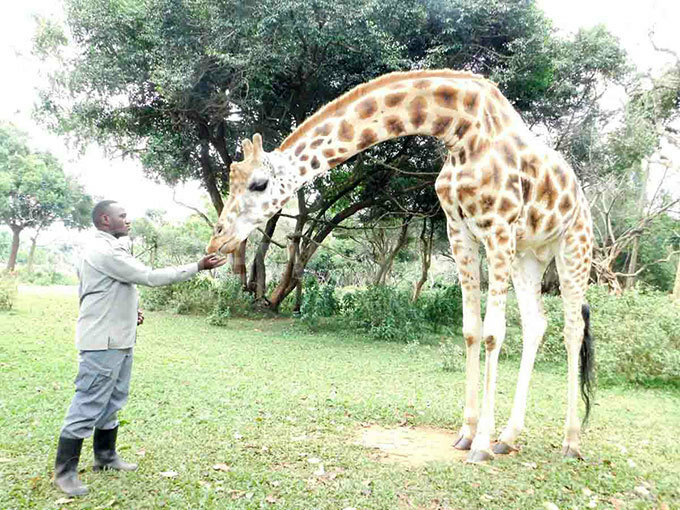Saving the graceful giraffe from extinction
“In Uganda giraffes are seen in Mburo National Park, Murchison Falls National Park and Kidepo Valley National Park,” says Steven Busulwa an animal keeper at Uganda Wildlife Education Center (UWEC) in Entebbe.
WILDLIFE TOURISM
From huge herds that roamed the wilderness over 100 years ago, only 700 awkward looking giraffes, are surviving in Uganda today.
When they walk, unlike other mammals, both the front and hind limbs move back and forth like twin pair of scissors in motion.
"In Uganda giraffes are seen in Mburo National Park, Murchison Falls National Park and Kidepo Valley National Park," says Steven Busulwa an animal keeper at Uganda Wildlife Education Center (UWEC) in Entebbe. "While in the wild they eat more than the 40kg of vegetation available in captivity."

"Andrew!" calls Busulwa. "The giraffe was named after the former executive director of Uganda Wildlife Authority, Dr. Andrew Seguya. It is a calm animal which loves acacia leaves and vegetables like egg plants, cabbage and fruits."
The other two giants at UWEC are Murchison and North that have failed to reproduce in the past years.
"Besides walking with grace like ballet dancers. These tall giants, growing to a height of six feet, have seven bones like humans do in the vertebrae. But unlike other mammals they have five horns instead of the conventional two," Busulwa explains.
The giraffes have patterns on the body and socks like white skins from the knees to the hooves. When it comes to drinking water, the front legs spread, in order to bring the neck lower to the ground.
"This enables them to see from near and far in order to run away from predators. If need be, then a fight evolves they hit each other using the short horns and rubbing necks."
Fortunately, as their numbers plummet Uganda Wildlife Authority (UWA) is translocating them from where populations are overwhelming the capacity to graze to less endowed destinations.
"We do not know what effect the oil exploration in Hoima will have on the giraffes as their habitat decreases every day," So we are securing a buffer stock in UWEC, Southern bank of River Nile and Kidepo National Park," explained UWA spokesman Gessa Simplicious.
"The ones in Kidepo have adopted and are already reproducing. Securing is cheaper than reintroducing the mammals as proven with the rhinos which were once hunted to extinction."
The scared animal sprints away in slow motion at a speed of 30km per hour when they are at their fastest pace.
It took more than 60 energetic men to chase, rope and tackle and load them on the trucks. Twenty of them were kept in an enclosure before enjoying their maiden ride on a lorry.